|
No |
Title and Author |
Page |
|
1 |
Characteristics of seawater intrusion in Soc Trang province, Vietnam Trieu Anh Ngoc1*, Vu Thi Hoai Thu2, Can Thu Van3 1 Thuy Loi University, 175 Tay Son, Dong Da, Hanoi, Vietnam; ngocta@tlu.edu.vn 2 University of Transport Ho Chi Minh City; Hoaithu.vu@ut.edu.vn 3 Ho Chi Minh University of Natural Resources and Environment; ctvan@hcmunre.edu.vn *Corresponding author: ngocta@tlu.edu.vn; Tel.: +84–902789267 Abstracts: Seawater intrusion poses many severe issues in many coastal areas around the world, including the Mekong Delta, Vietnam. For sustainable water management in such regions requires, it is crucial to understand the characteristics of salinization. This study aims to investigate the characteristics of the salinization phenomenon in water systems and its controlling factors based on hydrogeochemical analysis, seawater-freshwater mixing model and End Members Mixing Analysis. The results revealed that seawater intrusion negatively affects strongly on surface water quality with different magnitudes, depending on seasonal variation and tidal regime. It was estimated that surface water mixed with approximately 29.5% and 4.12% of seawater in the dry season and rainy season, respectively. However, it was found that the salinity in groundwater showed less seasonal variation and was distributed heterogeneously following the depth of screened wells and distance to the sea. The mixing ratio between seawater and groundwater varied widely, ranging from less than 10% in deep groundwater up to a maximum of 38% in shallow groundwater. Surface water salinization in the study area is controlled by upstream discharge, tidal regime, and operation of sluice gates. Meanwhile, groundwater salinization might be governed by geological characteristics, original recharge sources, human intervention, and natural variation, especially excessive groundwater exploitation in the Mekong Delta. Therefore, integrated sustainable groundwater and surface water use and management strategies in the Mekong Delta are needed in the context of human-nature intervention. Keywords: Seawater intrusion; Seawater-Freshwarer Mixing; Soc Trang; Vietnam. |
1 |
|
2 |
Experimental optimization to enhance oil removal efficiency from water using carbonized rambutan peel Trinh Trong Nguyen1, Nguyen Dinh Loc1, Le Huy Ba2, Thai Van Nam1* 1 HUTECH Institute of Applied Sciences, HUTECH University, Ho Chi Minh City, Vietnam; tt.nguyen@hutech.edu.vn; lochenni@gmail.com; tv.nam@hutech.edu.vn 2 Faculty of Biology and Environment, Ho Chi Minh City University of Industry and Trade, 140 Le Trong Tan, Ho Chi Minh 700000, Viet Nam; lhuyba@gmail.com *Corresponding author: tv.nam@hutech.edu.vn; Tel: +84–945007990 Abstracts: In this study, the objective was to employ experimental design in order to optimize the efficiency of diesel oil removal from water using activated carbon sourced from rambutan peel. A central composite design was utilized to investigate the impact of contact time, adsorbent dosage, initial oil concentration, and pH on both the removal efficiency and oil adsorption capacity across 30 different experimental designs. The analysis of activated carbon properties derived from rambutan peel revealed a BET surface area of 786.014 m2/g, a BJH adsorption cumulative pore volume of 0.054 cm3/g, and an average BJH adsorption pore diameter of 55.243 nm. The quadratic model was employed to estimate the mathematical relationship between the removal efficiency and adsorption capacity of diesel oil in relation to the four key independent variables. The ANOVA analysis demonstrates F-values of 12.36 and 39.92 for the respective models, both exhibiting ρ-values < 0.05. The predicted values closely align with experimental results, showcasing R2 values of 92.02% for removal efficiency and 97.39% for adsorption capacity. The investigation anticipates that, based on the analysis of 87 solutions, optimal conditions of 70.60 minutes of contact time, 0.25 g/g adsorbent dosage, 0.97% v/v initial oil concentration, and a pH of 6.20 will yield a maximum removal efficiency of 72.12% and a maximum adsorption capacity of 5.3570 g/g. This combination of factors achieves a desirability rating of 0.741. Keywords: Activated carbon; Diesel oil; Materials science; Modeling; Rambutan peel. |
12 |
|
3 |
Evaluation of the Can Gio Vegetation Index changes using the Sentinel-2 Datasets from 2015 to 2023 Anh Bui Khanh Van1* 1 Ho Chi Minh City University University of Natural Resources and Environment; bkvanh@hcmunre.edu.vn; bkvanh2020@gmail.com *Corresponding author: bkvanh2020@gmail.com; Tel.: +84–908836115 Abstracts: Can Gio Mangrove Biosphere Reserve provide many ecosystem services, such as provisioning, regulating, cultural, and supporting services for the urban areas as well as wildlife of suburban areas in Ho Chi Minh City and the nearby ecosystems. Therefore, it is important to monitor and evaluate the changing of mangrove forest cover in the long term. In this study, the Normalized Difference Vegetation Index - NDVI at 10 m resolution from 2015 to 2023 of Can Gio was obtained from the Copernicus Sentinel-2 database using Google Earth Engine - GEE. Subsequently, NDVIs statistic were computed by R to assess the slope of NDVI changing with p-value significance in Can Gio. The results indicated that NDVI values typically range from -0.4 to +0.8 and vary annually. It is evident that NDVIs values from 2015 to 2020 are marginally higher than those recorded between 2021 and 2023. The degradation in average NDVI from 2015 to 2023 was rationally deducible either from the downsizing of mangrove forest areas or the degradation of the mangrove forest. However, the annual NDVI statistic revealed there were areas with an acceleration of NDVI in comparison with the destruction of NDVI areas from 2015 to 2023. Linear regression effectively models continuous processes like deposition or erosion. However, to evaluate other factors such as discrete human-made or sporadic impacts, alternative statistical models should be considered Keywords: Normalized Difference Vegetation Index - NDVI; The Copernicus Sentinel-2 database; Can Gio; Spatial and temporal pattern. |
24 |
|
4 |
Determine greenhouse gas emissions from landfills and suggest a household solid waste classification system in Dong Hoi, Quang Binh province Doan Ha Phong1*, Nguyen Hue2, Vu Van Doanh3, Nguyen Quang Hieu4 1 Vietnam Institute of Meteorology, Hydrology Science and Climate Change; Doanhaphong@gmail.com 2 Department of Natural Resources and Environment of Quang Binh; nghue66@gmail.com 3 Hanoi University of Natural Resources and Environment; vvdoanh@hunre.edu.vn 4 Quang Binh Environment & Urban Development Joint Stock Company; qhieu1302@gmail.com *Corresponding author: doanhaphong@gmail.com; Tel.: +84–913212325 Abstracts: The distribution network model is one of the sophisticated strategies being used in research to assess the state of household solid waste (HSW) management and calculate the quantity of greenhouse gas emissions from landfills in Nghia Ninh and Bao Ninh communes. Traditional and modern techniques are also being used in this study. The results have assessed the existing state of household solid waste (HSW) management for home sizes ranging from four to six people. The daily average for garbage per person is 0.31 kilogram. The corresponding CO2 emissions from the two communes are 0.42 kg/person/day (Bao Ninh) and 0.47 kg/person/day (Nghia Ninh); study and survey data from these two districts show that the average cost for households to collect HSW is 27,000 VND/family/month. 2698.72 kg CO2 equivalent per ton of garbage, the same amount of emissions from solid waste. Nghia Ninh and Bao Ninh communes, as well as the Dong Hoi city government in general, rely on it to limit the amount of waste that families emit into the environment while encouraging improved information exchange and sharing. Share responsibility for waste management and encourage waste separation at the source. Keywords: HSW; GHG emission; MSW; Landfilling; Dong Hoi , Quang Binh. |
38 |
|
5 |
Risk of groundwater pollution and proposals for sustainable development in Binh Thuan province, Vietnam Huynh Phu1*, Tran Thi Minh Ha2 1 HUTECH University; HUTECH Institute of Applied Sciences; h.phu@hutech.edu.vn 2 Tay Nguyen University, Buon Ma Thuot - Dak Lak Province; ttmha@ttn.edu.vn *Correspondence: h.phu@hutech.edu.vn; Tel.: +84–966687548 Abstracts: Groundwater serves as one of the important sources of water supply for Binh Thuan province, Vietnam during dry seasons. This water source is concentrated in Quaternary sediments with two aquifers qh and qp. Geophysical methods have been applied, performing geological drilling, observing and monitoring boreholes. Determine the characteristics of the qh and qp aquifers, located along the coast of Binh Thuan province. Our research has shown that these reservoirs are contaminated. Water sources are at high risk of being contaminated with mineral oil, radioactive, organic, bacterial and saline contamination. The article warned about water resource risks in Binh Thuan province and proposed remedial measures to ensure water resources for Binh Thuan province. Keywords: Aquifers; Binh Thuan Province; Ground Water; Salinization. |
50 |
|
6 |
The trend of erosion and accretion of the western coast of the Mekong Delta, the section from Ca Mau Cape to Kien Giang Duyen Chau My Nguyen1, Vy Huynh Thuy Duong1, Long Ta Bui1* 1 Faculty of Environment and Natural Resources, University of Technology, Vietnam National University, Ho Chi Minh City; nguyenduyen91@hcmut.edu.vn; vy.duonghthuyvy@hcmut.edu.vn; longbt62@hcmut.edu.vn *Correspondence: longbt62@hcmut.edu.vn; Tel.: +84–918017376 Abstracts: Natural processes and human-caused activities, including coastal erosion, constantly threaten coastal areas. This phenomenon is dangerous because the permanent loss of land leads to the transformation of the coast. In recent years, coastal erosion has become increasingly complicated in the Mekong Delta, especially in the western coastal area of Cape Ca Mau. This study aims to provide updated results of the changing trend of accretion/erosion of the coastline from Cape Ca Mau to Kien Giang in 2021-2023. Specifically, the rate and area of erosion/accretion considered. Remote sensing and GIS tools are used. As a result, in Ngoc Hien district, Ca Mau, the erosion rate is 55.66 m/year, and the erosion area is 47.21 hectares, ranking highest compared to other districts in the same study area. The results also show that the Kien Giang coastal area has a more moderate erosion process than the accretion process. In contrast, on the coast of the Ca Mau Cape area, the erosion and accretion process are complexly interwoven, especially in the Dat Alluvial Plains area Cape - Ngoc Hien (Ca Mau). Keywords: Coastal erosion; Landsat8 OLI/TIRS; GIS; Mekong Delta; Ca Mau - Kien Giang. |
66 |
|
7 |
A study on the application of computational models as support tools in urban flood management along the Cai Nai river in Can Tho city Nguyen Van Hong1, Nguyen Thao Hien1* 1 Sub-Institute of Hydrology Meteorology and Climate Change; nguyenvanhong79@gmail.com; nthien2710@gmail.com *Correspondence: nthien2710@gmail.com; Tel.: +84–934720858 Abstracts: Urbanization processes often lead to flooding issues, hindering the development of cities in Vietnam. For cities undergoing planning, initial solutions are crucial. To avoid replicating old urban structures, lacking green spaces, and missing water retention systems, this paper applies Low Impact Development (LID) solutions within the Storm Water Management Model (SWMM) framework for flood management in the new urban area along the Cai Nai River, located in the new residential area of Hung Thanh Ward, Cai Rang District, Can Tho City. The integration of SWMM with LID serves as a useful tool towards sustainable urban development, aiming for a more modern and intelligent city. This tool helps managers and investors save costs and time in selecting suitable solutions tailored to the planning characteristics of the study area, ensuring effectiveness during implementation. The paper proposes constructing two scenarios: current status and planned; comparing flow rates before and after urbanization for a major rainfall event on April 2, 2023. Subsequently, LID solutions are introduced and evaluated for effectiveness through each calculated scenario. Keywords: Urban flooding; Cai Nai; Can Tho; SWMM; LID. |
79 |
|
8 |
Evaluate the correct and the skill of the IFS model for minimum temperature, average temperature, maximum temperature forecasting in short term (24 hours) at 09 regions in Vietnam Le Thi Thu Ha1*, Nguyen Thu Hang2, Tran Thi Thanh Hai1, Nguyen Thi Tuyet3 1 Meteorological and Hydrological Forecasting Management Department; leha246@gmail.com; haitran84@gmail.com 2 National Center for Hydro-Meteorological Forecasting; nthang0676@gmail.com 3 Ho Chi Minh University of Natural Resource and Environment; nttuyet@hcmunre.edu.vn *Corresponding author: leha246@gmail.com; Tel.: +84–904290269 Abstracts: Conceptually, forecast verification is simple, you just need to compare the forecast factors and observed factors. The accuracy of a forecast is a measure of how close to the actual weather the forecast was. The reliability of a forecast is the average agreement between the forecast values and the observed values. The skill of a forecast is performed based on some benchmark forecast, usually by comparing the accuracy of the forecast with the accuracy of the benchmark. The benchmark forecast can be a climatic value. Meanwhile, the correct forecast is bias between the forecast value and the observed value within the allowable range. This study evaluates the correct and forecasting skill of the IFS model (by European Centre for Medium-Range Weather Forecasts) for minimum temperature (Tm), average temperature (Tave), maximum temperature (Tx) forecasting in 24 hours at 09 regions in Viet Nam. The results show that within 24 hours, the IFS model predicts a high bias for the Tm (from 0.2 to 0.9oC) and a low bias for the Tave (from -0.2 to -0.9oC) and Tx (from -1.0 to -2.0oC). The correct in the southern region is higher than in the northern region (average about 10 to 15%). The skill of IFS model is higher than the benchmark (skill for the Tm has exceeded the Benchmark value by 0.4 to 0.6; skill for the Tave has exceeded the Benchmark value by 0.5 to 08), in there, the skill of Tm and Tave is higher than skill of Tx at the most regions, except in the Southern region, the skill of IFS model is lower than the benchmark for Tave and Tx. Keywords: Accuracy; Reliability; Skills; Forecast Verification. |
92 |

-page-0001.jpg)
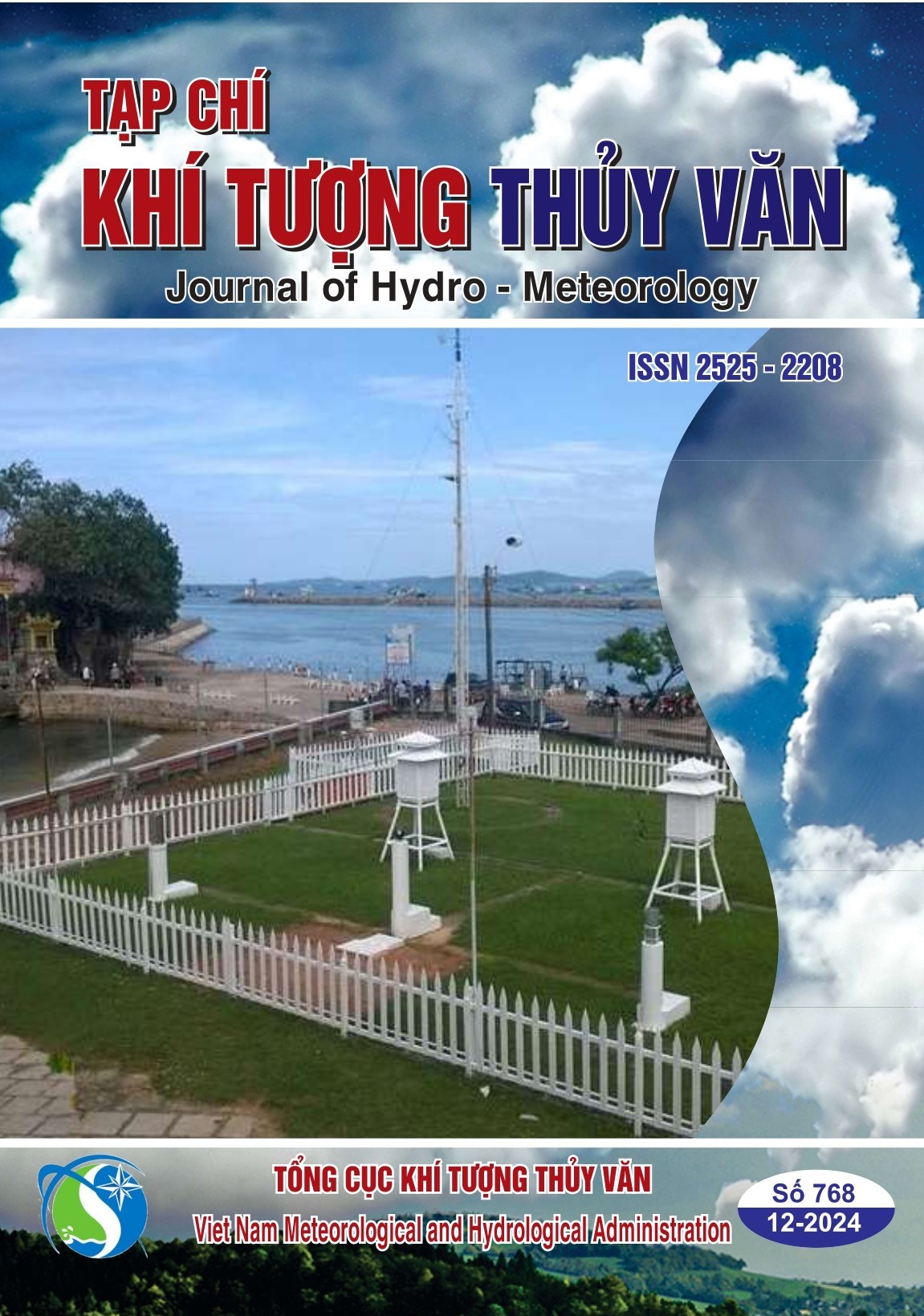
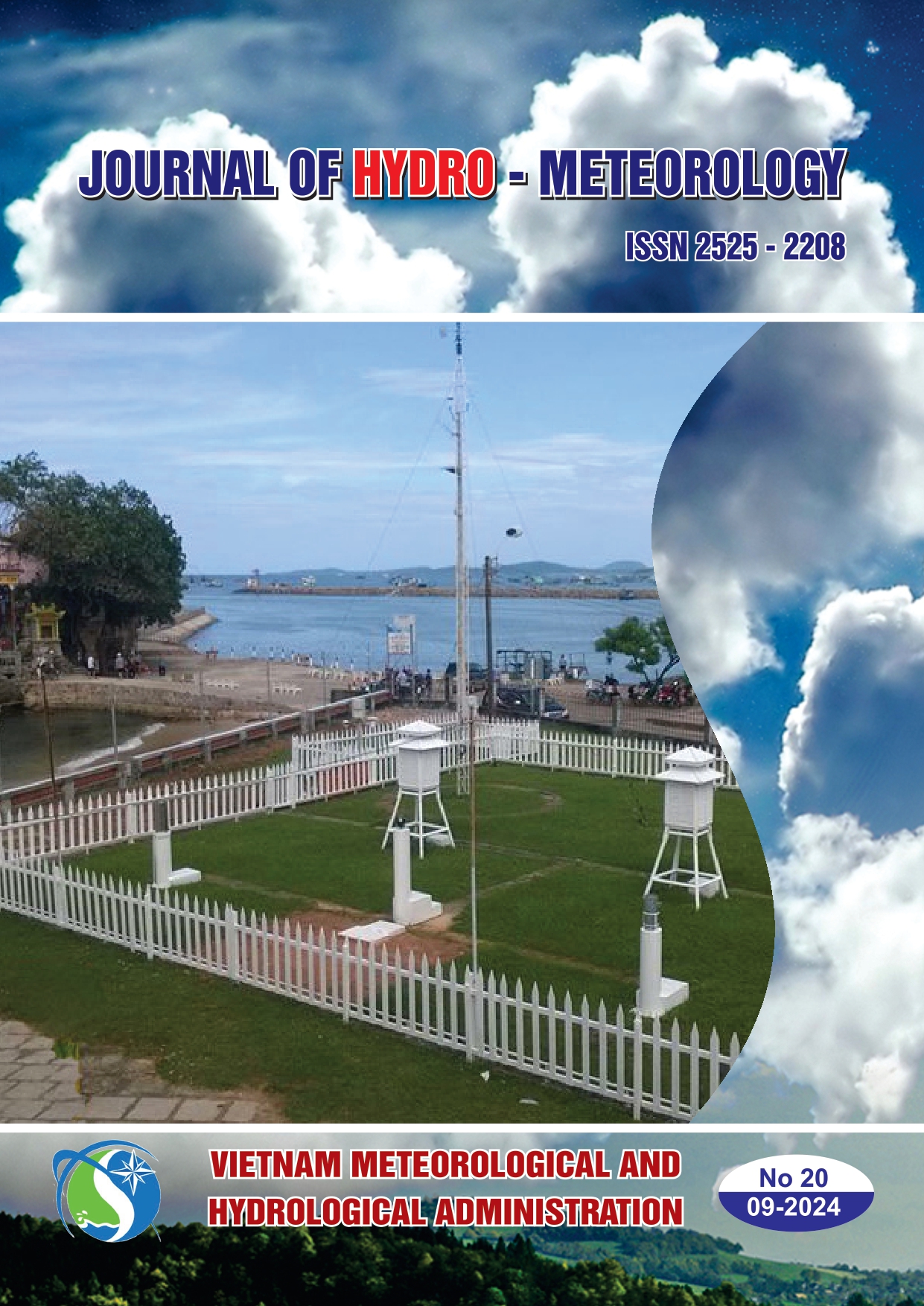
-page-0001.jpg)
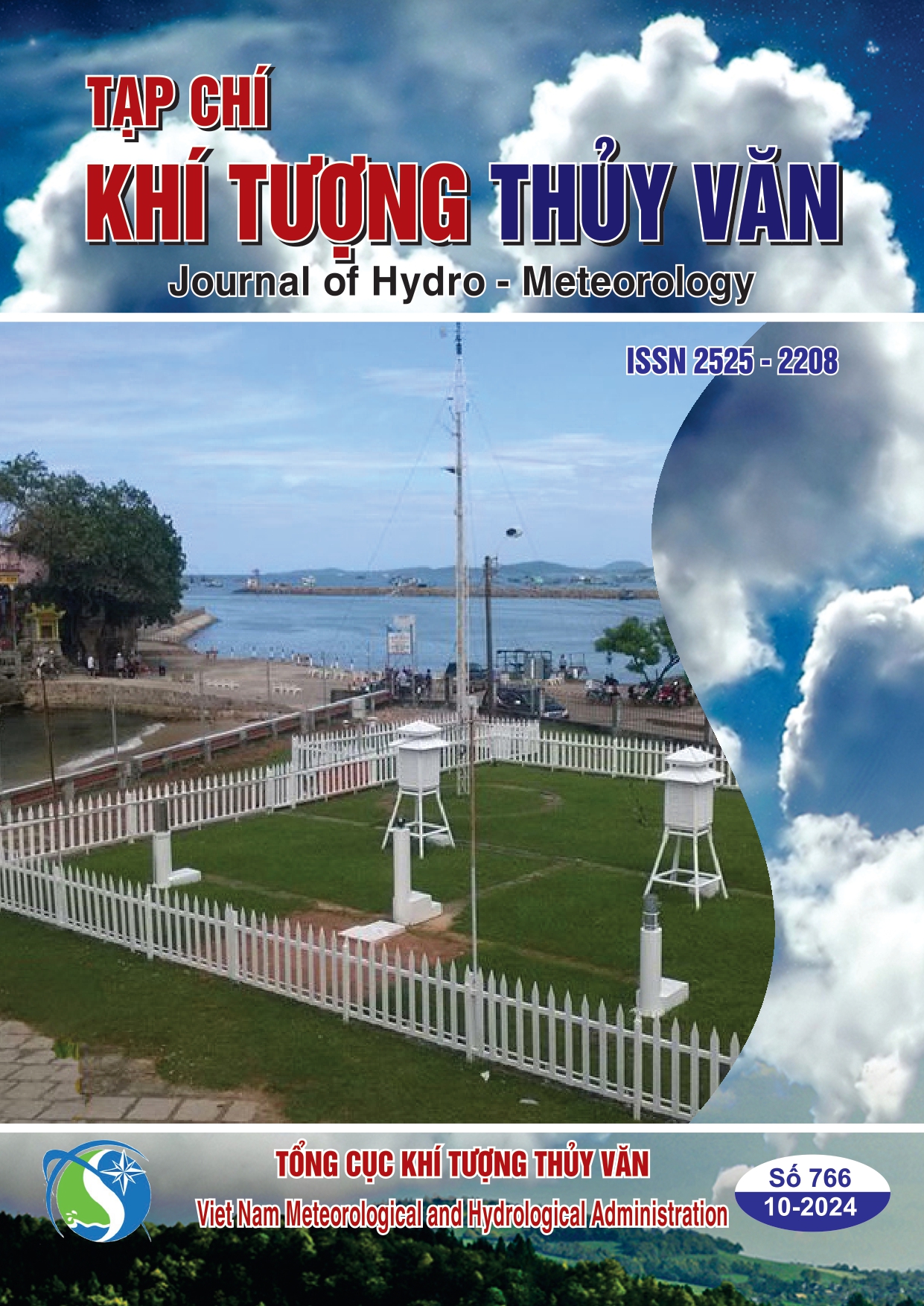
-page-0001.jpg)
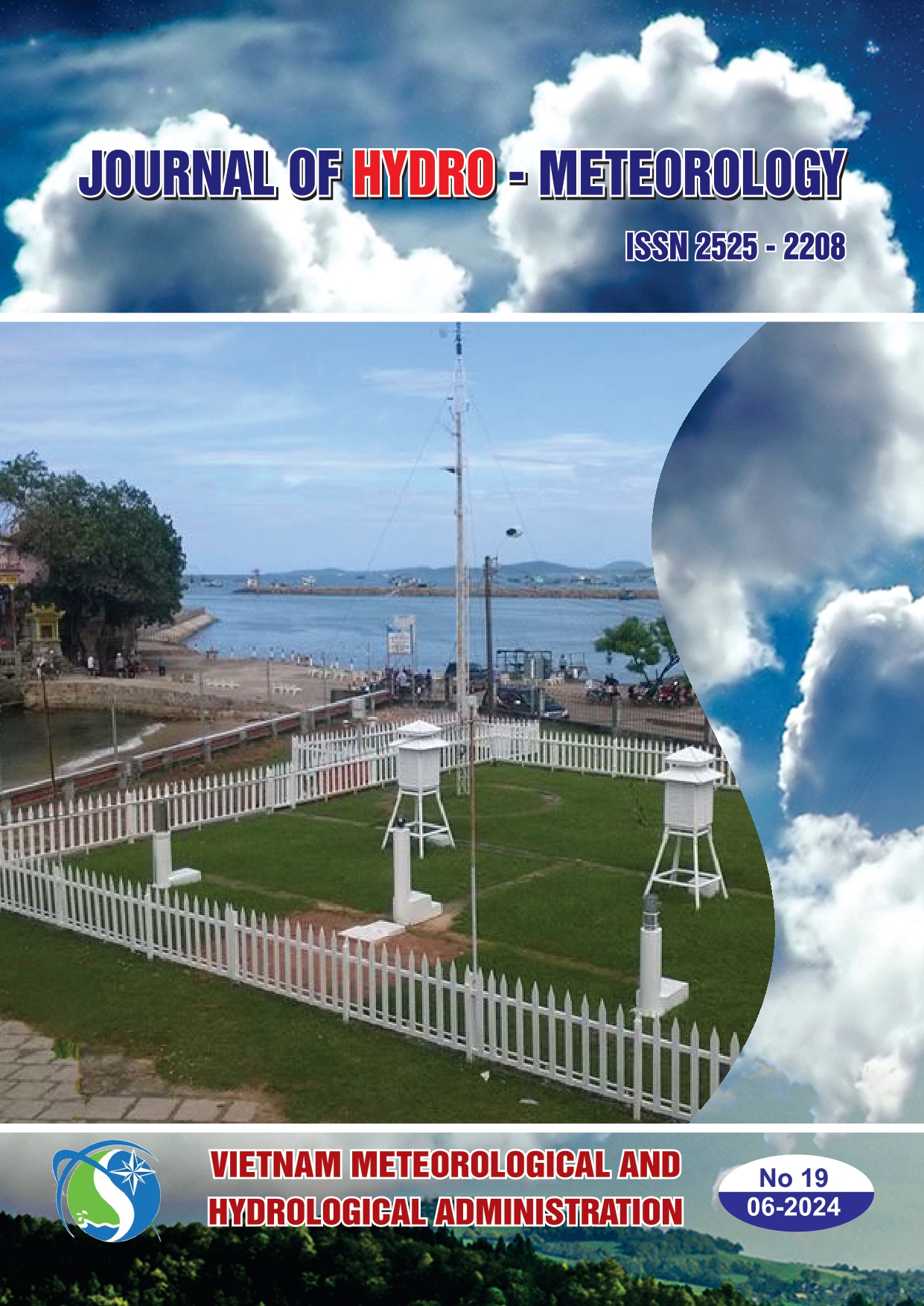
-page-0001.jpg)
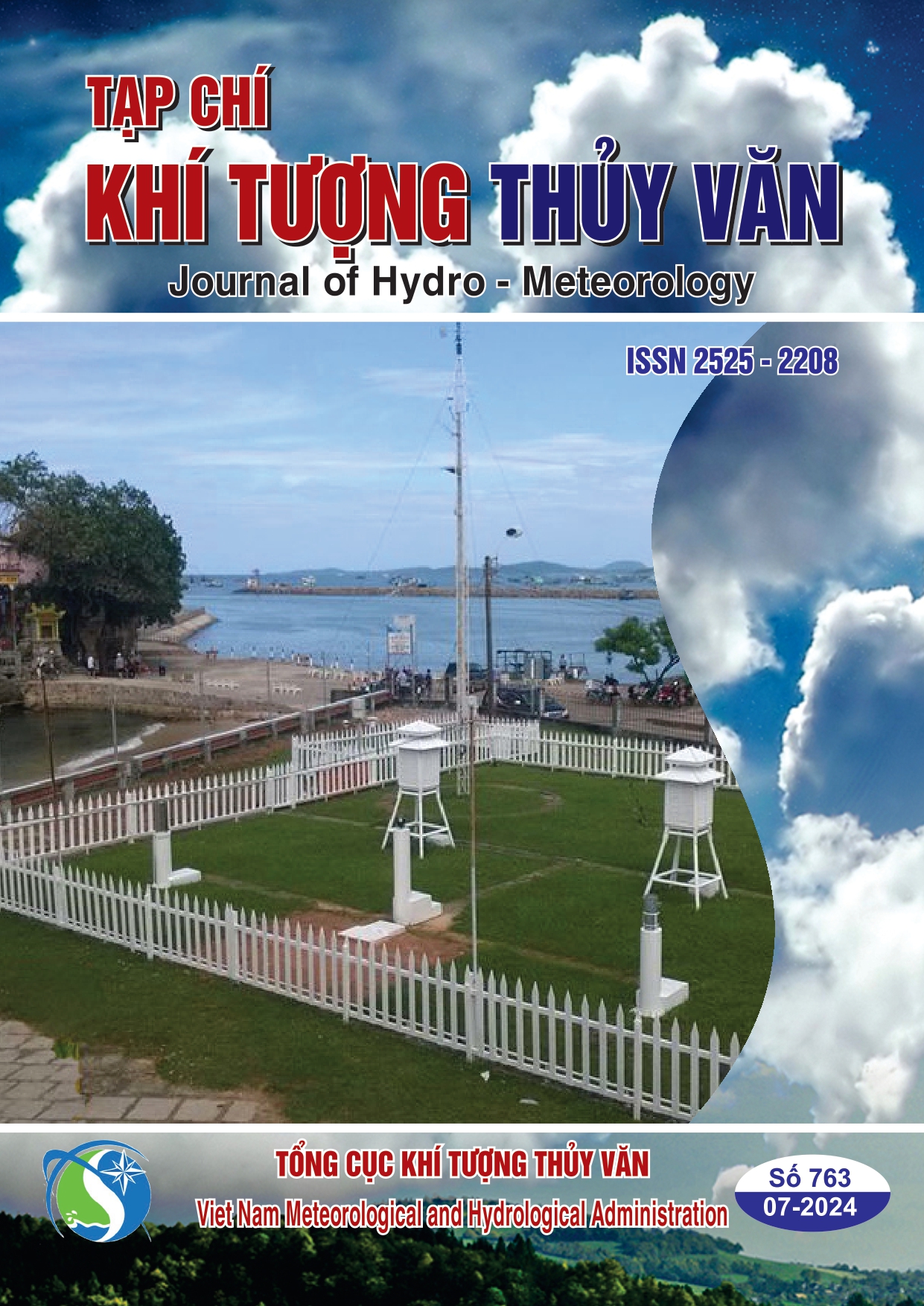
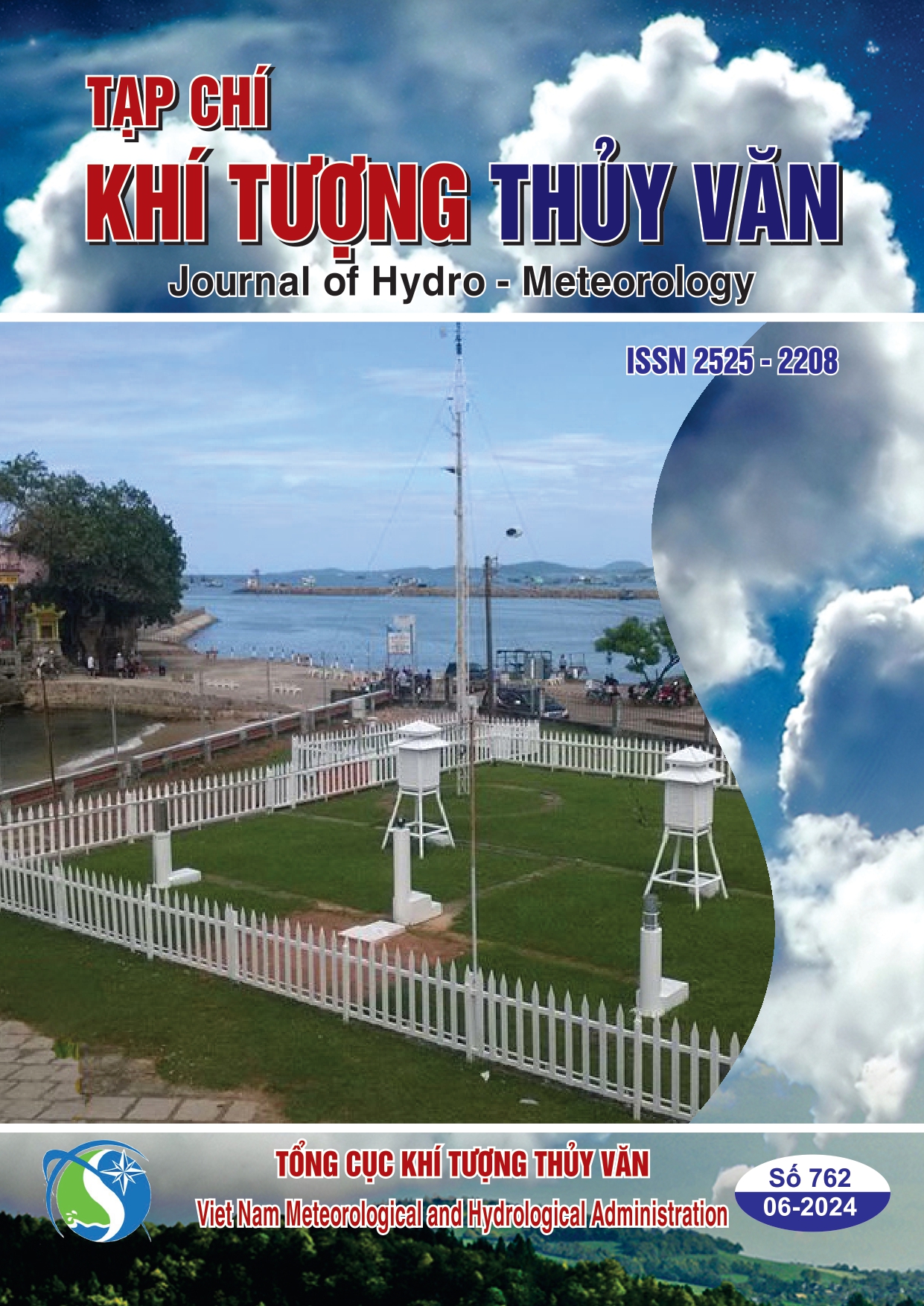
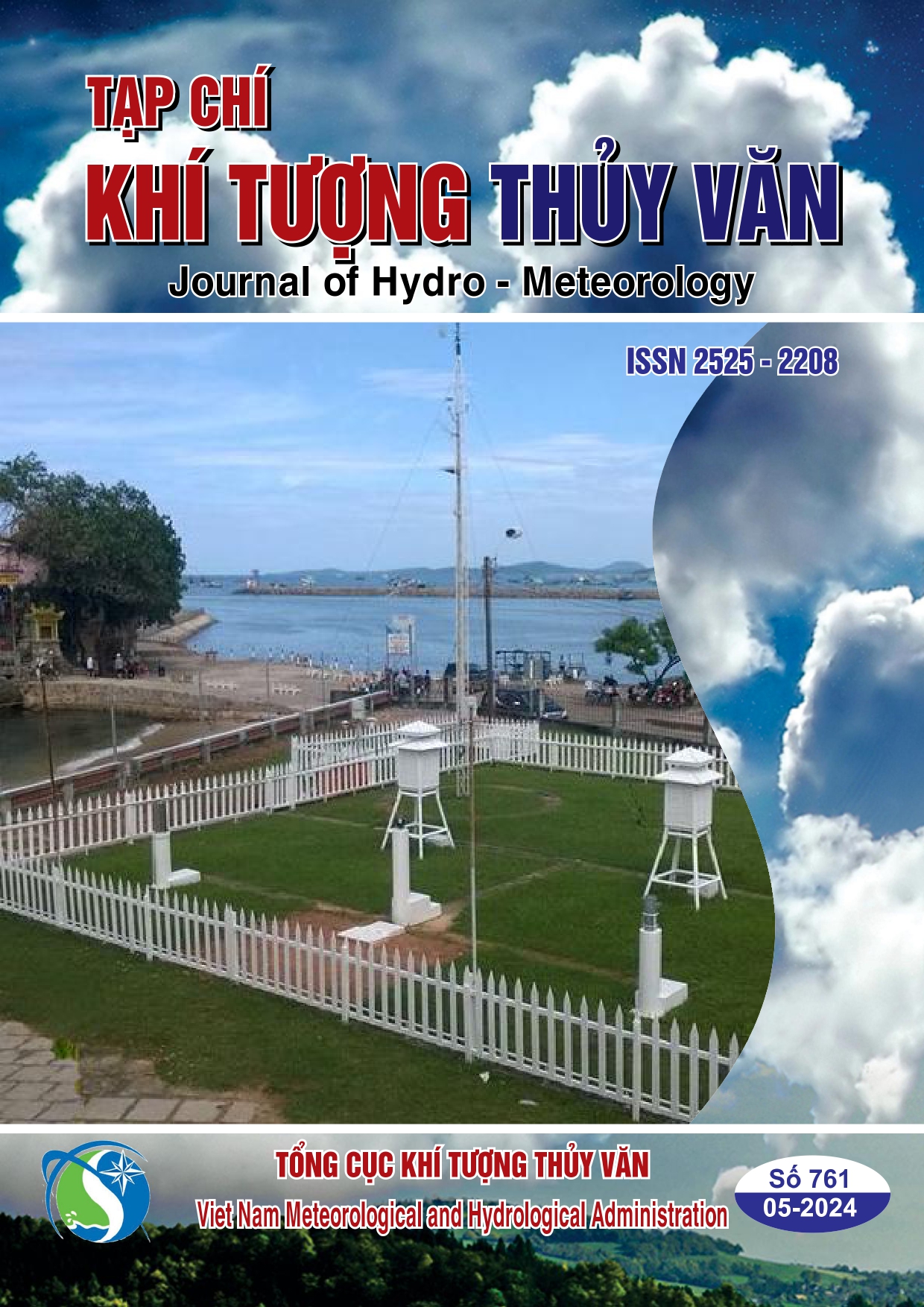

 Tổng cục Khí tượng Thủy văn vừa ban hành Quyết định số 1532/QĐ-TCKTTV về Kế hoạch “Phổ biến, giáo dục pháp luật và truyền thông chính sách có tác động lớn đến xã hội trong quá trình xây dựng văn bản quy phạm pháp luật về khí tượng thủy văn năm 2025”
Tổng cục Khí tượng Thủy văn vừa ban hành Quyết định số 1532/QĐ-TCKTTV về Kế hoạch “Phổ biến, giáo dục pháp luật và truyền thông chính sách có tác động lớn đến xã hội trong quá trình xây dựng văn bản quy phạm pháp luật về khí tượng thủy văn năm 2025” 
.jpg)
.jpg)
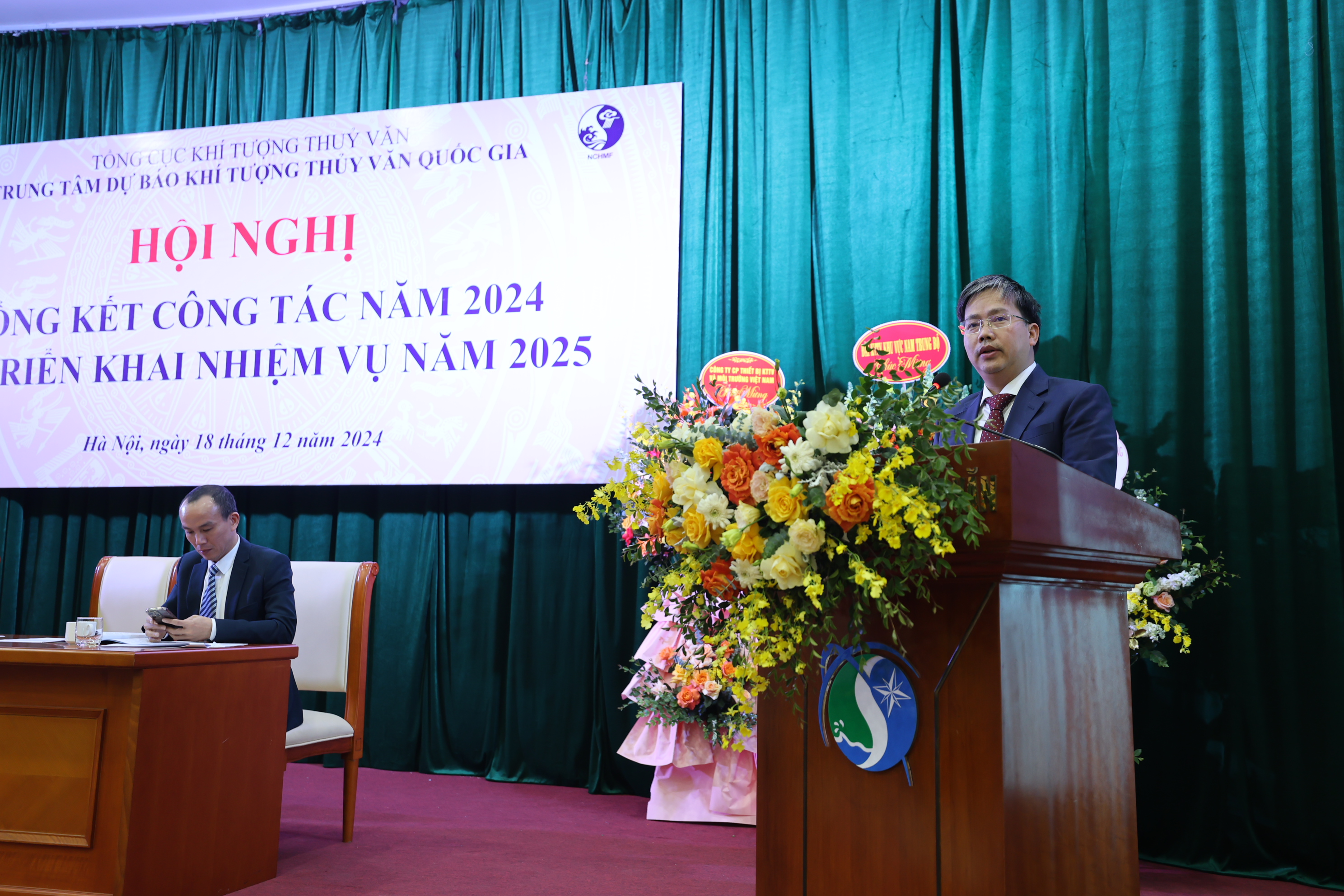
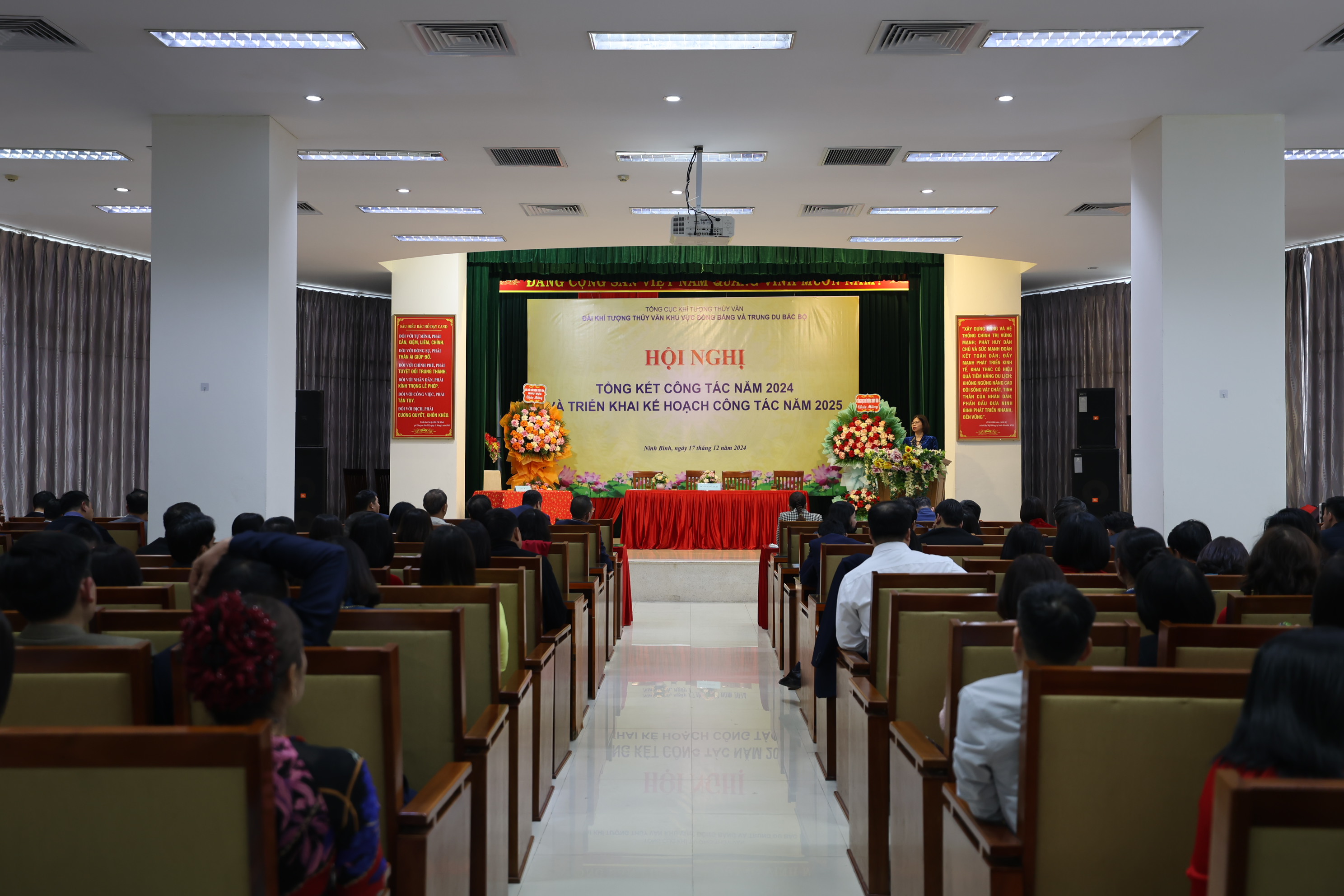
.jpg)
.jpg)